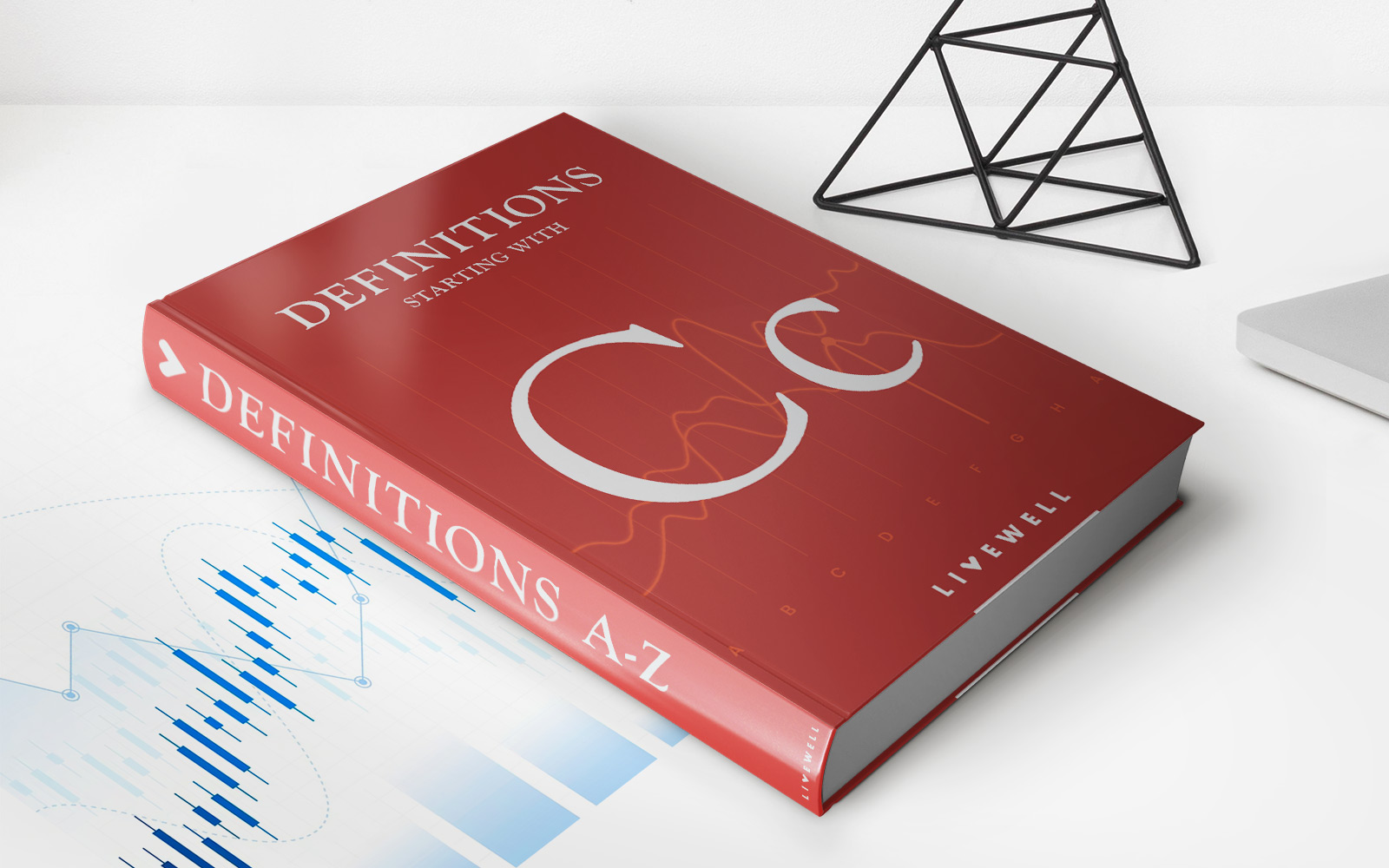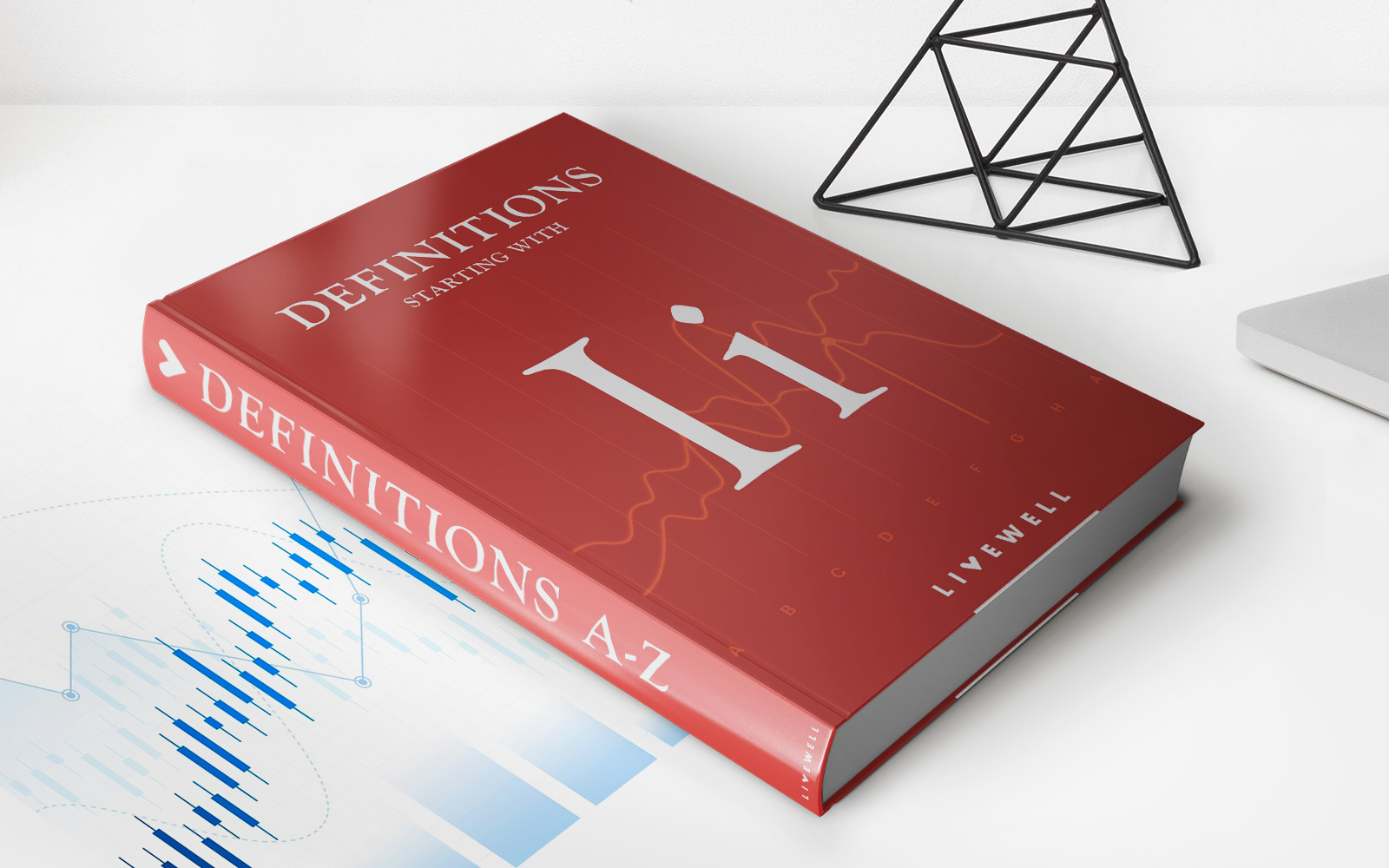

Finance
What Is A 30-Year Term Life Insurance Policy?
Modified: February 21, 2024
Learn all about 30-year term life insurance policies and how they can provide long-term financial security for you and your loved ones. Explore different options and make an informed decision today.
(Many of the links in this article redirect to a specific reviewed product. Your purchase of these products through affiliate links helps to generate commission for LiveWell, at no extra cost. Learn more)
Table of Contents
- Introduction
- What is Term Life Insurance?
- Understanding Different Term Lengths
- Features of a 30-Year Term Life Insurance Policy
- Benefits of a 30-Year Term Life Insurance Policy
- Is a 30-Year Term Life Insurance Policy Right for You?
- How to Apply for a 30-Year Term Life Insurance Policy
- Factors to Consider When Choosing a 30-Year Term Life Insurance Policy
- Frequently Asked Questions
- Conclusion
Introduction
Welcome to our comprehensive guide to understanding a 30-year term life insurance policy and its importance in securing your financial future. Life insurance is a crucial component of any solid financial plan, providing your loved ones with financial protection in the event of your unexpected passing.
Term life insurance is a type of life insurance that provides coverage for a specific period, known as the term. A 30-year term life insurance policy offers coverage for a period of 30 years. This means that if you were to pass away within those 30 years, your beneficiaries would receive a death benefit payout.
While term life insurance policies are available in different term lengths, a 30-year term is particularly popular due to the long-term coverage it offers. It can be an excellent option for individuals who have long-term financial obligations, such as a mortgage, educational expenses, or dependent children.
In this guide, we will delve into the various aspects of a 30-year term life insurance policy, including its features, benefits, and factors to consider when choosing this type of coverage. We’ll also address frequently asked questions and provide guidance on how to apply for a 30-year term life insurance policy.
By the end of this guide, you will have a comprehensive understanding of a 30-year term life insurance policy and be empowered to make an informed decision that aligns with your financial goals and needs. Let’s get started!
What is Term Life Insurance?
Term life insurance is a type of life insurance coverage that provides protection for a specific period, or “term.” Unlike permanent life insurance policies such as whole life or universal life insurance, term life insurance does not build cash value over time. Instead, it focuses solely on providing a death benefit to your beneficiaries if you were to pass away during the term of the policy.
One of the key advantages of term life insurance is its affordability. Typically, term life insurance premiums are lower compared to permanent life insurance policies. This is because term life insurance provides coverage for a predetermined period, rather than for your entire lifetime.
Term life insurance policies are available in various term lengths, such as 10, 20, or 30 years. The term length you choose depends on your specific needs and financial obligations. Each term length offers different benefits and considerations.
Unlike permanent life insurance policies, term life insurance does not offer any living benefits or cash value accumulation. It is solely focused on providing a death benefit to your beneficiaries if you were to pass away during the term. This makes term life insurance a practical option for individuals who want to ensure financial protection for their loved ones during specific years of their life when they may have more significant financial responsibilities or obligations.
It’s important to note that once the term of your policy ends, your coverage will expire. At this point, you may have the option to renew your policy or convert it into a permanent life insurance policy, although this is typically at a higher premium rate.
Term life insurance is a popular choice for individuals and families looking for cost-effective coverage over a specific period. It offers peace of mind, knowing that your loved ones will be financially protected in the event of your passing during the term of the policy.
Now that we’ve covered the basics of term life insurance, let’s dive deeper into the specifics of a 30-year term life insurance policy and understand what sets it apart.
Understanding Different Term Lengths
When it comes to term life insurance, one of the significant factors to consider is the term length. Term lengths typically range from 10 to 30 years, although there may be variations depending on the insurance provider.
Each term length offers different advantages and considerations, and it’s essential to understand them to make an informed decision. Here’s a closer look at different term lengths:
1. 10-Year Term: A 10-year term life insurance policy provides coverage for 10 years. It can be a suitable option if you have short-term financial obligations or if you’re looking for temporary coverage at an affordable price. However, keep in mind that once the term ends, you’ll need to reassess your coverage needs.
2. 20-Year Term: A 20-year term life insurance policy provides coverage for 20 years. This term length is popular among individuals with long-term financial commitments, like a mortgage or children’s education expenses. It offers a longer duration of coverage compared to a 10-year term and provides greater peace of mind during specific years of financial responsibility.
3. 30-Year Term: A 30-year term life insurance policy provides coverage for 30 years, making it the longest term length available for term life insurance. This length of coverage is suitable for individuals with long-term financial obligations, such as a mortgage or dependents who may still be financially dependent on you. It offers the most extended period of coverage and can provide substantial financial protection for your loved ones.
When deciding on the term length, consider your current financial situation, long-term financial commitments, and future obligations. It’s essential to choose a term that aligns with your needs to ensure you have the coverage you require during crucial years.
Now that you have a better understanding of the different term lengths, let’s explore the features and benefits specific to a 30-year term life insurance policy.
Features of a 30-Year Term Life Insurance Policy
A 30-year term life insurance policy comes with several features that make it a popular choice for many individuals. Let’s take a closer look at some of the key features of this type of policy:
1. Long-term Coverage: As the name suggests, a 30-year term life insurance policy provides coverage for a period of 30 years. This extended term allows you to have financial protection and peace of mind for a significant portion of your life. It can be particularly beneficial if you have long-term financial responsibilities, such as a mortgage or young children.
2. Death Benefit Payout: Like other term life insurance policies, a 30-year term policy offers a death benefit payout to your beneficiaries if you were to pass away during the term of the policy. The death benefit can help your loved ones cover expenses like funeral costs, outstanding debts, medical bills, and ongoing living expenses.
3. Affordable Premiums: Term life insurance is generally more affordable compared to permanent life insurance policies because it provides coverage for a specific term, rather than for your entire lifetime. The premiums for a 30-year term life insurance policy are typically lower compared to permanent life insurance policies with similar death benefits.
4. Renewable Option: Many insurance providers offer a renewable option for 30-year term policies, which allows you to extend your coverage beyond the initial 30-year term. This can be advantageous if you still have financial obligations or dependents at the end of the original term and want to maintain your life insurance coverage.
5. Convertibility: Some 30-year term life insurance policies also come with a convertibility feature. This means you have the option to convert your term policy into a permanent life insurance policy, such as whole life or universal life, without needing to undergo a medical exam. Converting the policy provides you with lifelong coverage and potential cash value accumulation.
6. Flexibility: Another important feature of a 30-year term life insurance policy is its flexibility. You can choose the coverage amount that best suits your needs and adjust it as your circumstances change. Additionally, if you have multiple financial goals and needs, you can often stack different term lengths to create a comprehensive coverage plan.
Understanding the features of a 30-year term life insurance policy can help you determine if it aligns with your financial goals and provides the coverage you need to protect your loved ones. In the next section, we will explore the benefits of choosing a 30-year term policy.
Benefits of a 30-Year Term Life Insurance Policy
Choosing a 30-year term life insurance policy offers several benefits that can provide you and your loved ones with peace of mind and financial security. Let’s explore some of the key benefits of opting for a 30-year term policy:
1. Long-Term Financial Protection: One of the primary benefits of a 30-year term life insurance policy is the extended period of coverage it provides. With a 30-year term, you can ensure that your loved ones are financially protected throughout significant milestones and responsibilities, such as raising a family, paying off a mortgage, or funding your children’s education.
2. Affordability: Term life insurance policies, including the 30-year term, are generally more affordable compared to permanent life insurance options. This affordability allows you to obtain substantial coverage at a reasonable cost, ensuring that you can provide financial protection for your family without straining your budget.
3. Flexibility to Adjust Coverage: With a 30-year term life insurance policy, you have the flexibility to adjust your coverage as your needs change over time. For example, as you pay off debts or your children become financially independent, you may choose to reduce the coverage amount to reflect your changing circumstances.
4. Peace of Mind: Life is unpredictable, but having a 30-year term life insurance policy in place can give you peace of mind, knowing that your loved ones will have financial security if the unexpected were to happen. This peace of mind allows you to focus on other aspects of your life, knowing that you have taken the necessary steps to protect your family’s future.
5. Supplement Existing Coverage: If you already have a permanent life insurance policy, such as whole life or universal life insurance, adding a 30-year term policy can be a smart way to supplement your existing coverage. This combination of policies provides both lifelong coverage and additional temporary coverage during specific years of high financial responsibility.
6. Convertibility Option: Many 30-year term life insurance policies come with a convertibility option, allowing you to convert your policy into a permanent life insurance policy without the need for a medical exam. This can be advantageous if you decide that you want lifelong coverage or if your health has changed since you initially purchased the term policy.
By taking advantage of these benefits, a 30-year term life insurance policy can be an effective tool in providing financial protection and security for your loved ones. In the next section, we will discuss factors to consider when determining if a 30-year term policy is right for you.
Is a 30-Year Term Life Insurance Policy Right for You?
Deciding whether a 30-year term life insurance policy is the right choice for you depends on various factors. Here are some considerations to help you determine if a 30-year term policy aligns with your needs and financial goals:
1. Long-Term Financial Obligations: Evaluate your financial responsibilities and obligations over the next 30 years. If you have long-term financial commitments such as a mortgage, outstanding debts, or dependent children, a 30-year term policy can provide the necessary coverage to protect your loved ones during those years.
2. Age and Health: Your age and health are important factors to consider when selecting a term length. If you are relatively young and in good health, a 30-year term policy can provide coverage for a significant portion of your life, offering financial protection during your prime earning years and beyond.
3. Budget and Affordability: Consider your budget and ensure that the premiums for a 30-year term life insurance policy fit comfortably within your financial means. While term life insurance is generally more affordable than permanent life insurance, it’s essential to choose a coverage amount and premium that you can sustain over the policy’s duration.
4. Future Financial Goals: Take into account your future financial goals and plans. Do you anticipate needing additional coverage beyond the 30-year term? If so, you may want to consider combining a 30-year term policy with a permanent life insurance policy to provide ongoing coverage for your entire lifetime.
5. Flexibility and Convertibility: Evaluate the flexibility and convertibility options available with a 30-year term life insurance policy. Some policies offer the ability to convert to permanent coverage without a medical exam, providing lifelong coverage if your needs change or if you develop health issues later in life.
6. Family and Dependents: Consider your family dynamics and the financial support your loved ones may need in the event of your passing. If you have young children or dependents who rely on your income, a 30-year term policy can provide sufficient coverage to ensure their financial well-being during critical years.
It’s important to take the time to evaluate your unique situation and consult with an experienced insurance professional who can provide guidance based on your specific needs. They can help you understand the potential risks and opportunities associated with a 30-year term life insurance policy, allowing you to make an informed decision.
Now that you have considered the factors involved in determining if a 30-year term life insurance policy is right for you, let’s delve into the steps involved in applying for this type of coverage.
How to Apply for a 30-Year Term Life Insurance Policy
Applying for a 30-year term life insurance policy involves several steps. To ensure a smooth and successful application process, follow these general guidelines:
1. Determine Your Coverage Needs: Assess your financial obligations, such as outstanding debts, mortgage, or educational expenses, to determine the coverage amount you require. Consider the needs of your dependents and the financial support they would need in the event of your passing.
2. Research and Compare Providers: Research different insurance providers and compare their offerings, including coverage options, premiums, and reputation. Consider factors such as financial stability, customer service, and policy features that align with your needs.
3. Obtain Quotes: Contact insurance providers or use online quote comparison tools to obtain personalized quotes for a 30-year term life insurance policy. Make sure to provide accurate information regarding your age, health, lifestyle, and coverage amount required.
4. Complete an Application: Once you have selected an insurance provider, you will need to complete a formal application. This application will typically include personal and medical information, and may require you to undergo a medical exam or answer detailed health-related questions.
5. Undergo Medical Examination (if necessary): Depending on the insurance provider and your age, you may be required to undergo a medical examination. This exam will assess your overall health and may involve blood tests, urine samples, and a review of your medical history. The results will help determine your insurability and premium rates.
6. Review and Sign the Policy: Once your application has been processed and approved, carefully review the terms and conditions of the policy. Ensure that the coverage amount, premium, and policy duration align with your expectations. If you have any questions or concerns, clarifying them with the insurance provider is essential before signing the policy.
7. Make Premium Payments: Pay your premiums according to the schedule outlined in the policy. Timely premium payments are crucial to maintain your coverage. Consider setting up automatic payments to ensure you don’t miss any payments.
8. Keep Your Policy Updated: Regularly review your 30-year term life insurance policy to ensure it continues to meet your needs. Update the beneficiaries if there has been a change in your circumstances and inform the insurance provider of any significant life events or changes that may affect your coverage.
Remember, the exact application process can vary depending on the insurance provider and your individual circumstances. It’s always recommended to consult with an insurance professional who can guide you through the application process and help you make an informed decision.
Now that you’re familiar with the steps involved in applying for a 30-year term life insurance policy, let’s explore some factors to consider when choosing the right policy for your needs.
Factors to Consider When Choosing a 30-Year Term Life Insurance Policy
Choosing the right 30-year term life insurance policy requires careful consideration of several key factors. By evaluating these factors, you can select a policy that best fits your unique needs and financial goals. Here are some important factors to consider:
1. Coverage Amount: Determine the appropriate coverage amount needed to adequately protect your loved ones during the 30-year policy term. Consider factors such as outstanding debts, future financial obligations, and the financial support your beneficiaries would require in your absence.
2. Premiums and Affordability: Compare the premium rates offered by different insurance providers for a 30-year term policy. Ensure that the premiums fit within your budget and that you can comfortably afford them throughout the duration of the policy.
3. Financial Stability of the Insurance Provider: Research the financial stability and reputation of the insurance provider. Look for ratings from independent rating agencies such as A.M. Best, Standard & Poor’s, or Moody’s. A financially stable provider ensures that they can fulfill their obligations and pay out the death benefit when needed.
4. Policy Features and Riders: Evaluate the additional features and riders offered with the 30-year term life insurance policy. Common riders include accelerated death benefit rider, which allows you to access a portion of the death benefit if diagnosed with a terminal illness, and a waiver of premium rider that waives premiums if you become disabled.
5. Convertibility Options: Consider if the policy offers a convertibility feature, allowing you to convert the term policy into a permanent life insurance policy without the need for a medical exam. This can be beneficial if your circumstances change, and you decide you need lifelong coverage.
6. Customer Service and Reputation: Research the insurance provider’s customer service reputation and read reviews from policyholders. A provider with excellent customer service will be responsive, helpful, and guide you through the entire process, from application to claim settlement.
7. Underwriting Process: Understand the underwriting process of the insurance provider, including the requirements for medical exams and health assessments. If you have any pre-existing medical conditions, it’s essential to check if they will impact the premiums or eligibility for coverage.
8. Policy Exclusions and Limitations: Review any policy exclusions or limitations carefully. Understand the circumstances under which the insurance provider may not pay the death benefit, such as suicide within the first two years of the policy or death resulting from participation in hazardous activities.
By considering these factors and conducting thorough research, you can find a 30-year term life insurance policy that provides the coverage and features that align with your needs and financial goals.
Now that we’ve explored the factors to consider, let’s address some frequently asked questions about 30-year term life insurance policies.
Frequently Asked Questions
Here are some frequently asked questions (FAQs) related to 30-year term life insurance policies:
1. Can I renew my 30-year term life insurance policy?
Most insurance providers offer the option to renew a 30-year term policy at the end of the initial term. However, the premiums for the renewed policy are typically higher based on your age at the time of renewal.
2. Can I convert my 30-year term policy into a permanent life insurance policy?
Many 30-year term life insurance policies come with a convertibility option, allowing you to convert the policy into a permanent life insurance policy without a medical exam. This can be advantageous if you decide you need lifelong coverage.
3. What happens if I outlive my 30-year term life insurance policy?
If you outlive your 30-year term policy, the coverage will expire, and you will no longer have life insurance protection. It’s important to reassess your coverage needs as you approach the end of the policy term to ensure you have appropriate coverage in place.
4. Are the premiums for a 30-year term life insurance policy fixed for the entire term?
Yes, the premiums for a 30-year term life insurance policy are typically fixed for the entire 30-year term. This means that the premium amount you agree to at the beginning of the policy will remain the same, providing predictable and budget-friendly payments.
5. Can I add riders to my 30-year term life insurance policy?
Yes, many insurance providers offer various riders that can be added to your 30-year term life insurance policy for an additional cost. Common riders include accelerated death benefit riders, waiver of premium riders, and child or spouse riders. These riders can enhance your coverage and provide additional benefits.
6. Can I cancel my 30-year term life insurance policy before the term ends?
Yes, you can cancel your 30-year term life insurance policy at any time. However, keep in mind that if you cancel the policy before the term ends, you will no longer have life insurance coverage, and there is typically no refund for premiums paid.
It’s important to consult with an insurance professional to get personalized answers to your specific questions and to ensure you fully understand the terms and conditions of your 30-year term life insurance policy.
Now, let’s wrap up this guide to 30-year term life insurance policies.
Conclusion
Securing a 30-year term life insurance policy is an effective way to provide long-term financial protection for your loved ones. It offers coverage for a significant period, ensuring that your beneficiaries are safeguarded during years of high financial responsibility.
Throughout this comprehensive guide, we’ve explored the various aspects of a 30-year term life insurance policy, including its definition, features, benefits, and factors to consider when choosing this type of coverage. We’ve also discussed the application process and addressed some frequently asked questions.
When deciding if a 30-year term policy is right for you, consider factors such as your long-term financial obligations, age, budget, and family situation. It’s crucial to assess your coverage needs and evaluate the reputation and financial stability of different insurance providers before making a decision.
A 30-year term life insurance policy can provide peace of mind, knowing that your loved ones will be financially protected in the event of your passing during the term. It’s important to assess your needs regularly and adjust your coverage as necessary to ensure it continues to align with your evolving circumstances.
Remember, working with an experienced insurance professional can provide invaluable guidance throughout the process, ensuring you make an informed decision that meets your unique needs.
Now that you are equipped with a comprehensive understanding of 30-year term life insurance, take the next step to protect your loved ones by exploring your options and securing the coverage that provides the peace of mind you deserve.














